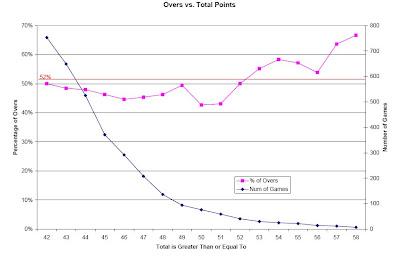"Why do they keep losing, they are stacked w/ talent and coaching?"
or
"I can't believe this team keeps covering - they should get blown out. They're killing me!"
And yet game after game, these teams continue to be undervalued or overvalued. We can learn from last year, but once again, you still have to look at this years teams/stats/results and not just bet on a team who was great as a Dog ATS last season for no other reason but that one.
Getting started, let's look at the Favorites:
The Broncos were the worst offender on this list. They were made favorites in 13 of their 16 games, and failed to cover in 10 of the 13 games. However, they were able to win 8 of those games. We saw a repeat of this AGAIN this season in week 1, where they lost as favorites in Buffalo. Not much has changed.
A close second offender were the Jags. They failed to cover in 7 of the 10 games they were favorites. The even bigger problem - they failed to win those games. If they didn't cover, they didn't win. And if they won, they would cover. We saw a repeat of this AGAIN this season in week 1, where they lost outright to the Titans. Not much has changed.
The Broncos in particular were one of those teams the public just did not get. Vegas continued to make money by making Denver the favorite, and the public continued to wager on them.
The teams in red are those favorites who would have lost you money if you took them and laid the points on every game they were favored.
On the other hand, the Jets were kind to bettors. They went 5-1 as favorites ATS (and of course won them all, as they were favored).
So far this season, of the teams who would have won you money last year, the Chargers, Bengals, Steelers and Pats were all favored in week 1. And they all covered. Not much has changed. But be careful, none of those teams had "way above avg" ATS ratings, but they were better than average.
The Jets far and away would be the team that got the job done last year. They are another example of a team the public did not get. The public would take the dog, and the Jets would continue to cover.... the opponents in these games were among the NFL's lowliest - Mia, Det, Hou, GB, Buf, Oak. But even though the oddsmakers kept the lines below -5 for the Jets (except Oak), the easy money was not so easy to the public, and those who took the Jets and laid points walked away happy.

Next, the Underdogs:
There were some underdogs who did absolutely terrible ATS last year. But they kept failing to cover the spread, and you made out if you bet against them. There were 4 teams that were underdogs in 14 of their 16 games. These teams were viewed as terrible by the avg bettor. They were:
Oak, GB, Det and Ten.
How do you think those teams did SU? Not as bad as you may think - 20-36.
What about ATS? How about 29-26. That's right, they actually had a winning record ATS.
The reason? Part of it has to do with the fact that the public just does not understand most underdogs. Another part was the Titans. These guys went 11-3 ATS despite being constantly made the underdogs. And worse than that?
Of those 11 wins, they only lost the game SU 3 times. That means they covered as dogs in 79% of their games, and won SU in their games as dogs 57%.
Even more impressive, since Vince Young started for them (which was week 5, I believe - correct me if I'm wrong), Ten has covered in 10 of the 11 games they were dogs. That's 91%. And won 8 of the 10 SU. For 8 straight weeks last season (weeks 9-16) they were dogs. Starting in week 10, they covered every single game, and starting week 11 (that's 6 straight) they won outright as dogs.
Looking at week 1 of this season, the Titans were dogs to the Jags, and the Titans covered and won SU as well. Not much has changed.
Other teams that were particularly impressive were the Saints and the Bills. Don't expect the public to sleep on the Saints this year, but they may on the Bills. While covering the spread in 8 of their 11 games as dogs, they actually lost 7 of them. So careful on ML-ing the Bills, but taking the points may not be too bad an investment in the right situation.
In the Bills first game of this season, they covered as dogs but lost SU to the Broncos. Not much has changed.
Looking at the other side, the teams to be extra cautious is the Redskins. By far the worst record ATS as dogs, the Skins went 4-9 ATS.








